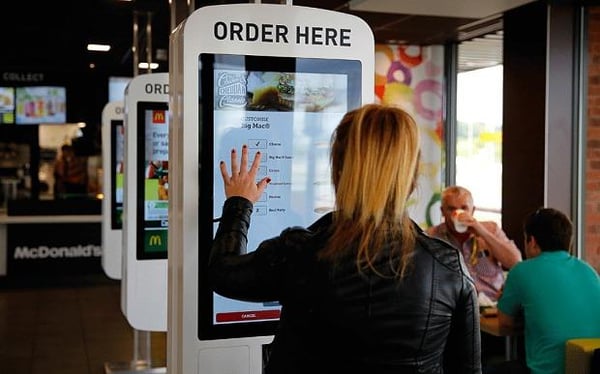Key points:
- In recent times, customer experience has become the foundation of successful enterprises.
- Due to this, several trends like AI-powered chatbots, internet of things(IoT) and virtual assistants have gained prominence.
- AI will further keep helping businesses step this up in future, making automation and AI-based personalization common for all industry realms.
Today, world-leading brands no longer set themselves apart by offering the best products but by creating outstanding customer experiences. Successful companies know the battle for customers is won through great customer experiences. According to Gartner, 81% of companies indicate they will compete on the basis of customer experience in future. How customers feel about brand interactions decides whether they will stay loyal or shift to another option.
Technology is driving rapid innovation in customer experience. Advances in virtual reality, artificial intelligence, and the Internet of Things are shaping customer expectations. Investing in the right technology now will help you stay ahead of the competition.
Five trends that will enrich customer experience:
1. Automation
More of the work will be completed through automation as machines better understand the content and context of customer interactions. AI-powered chatbots are commonly used by many companies now. They are already conversing with leads, directing customers to the right product, and successfully resolving their issues.
Automation helps where customers prefer self-servicing tools for simple actions, such as FAQs, yearly renewals, return processes and regular paperwork. Industries where customers need quick service and don’t expect personal interaction are best suited for automation.
Although automation is set to invade many jobs, most experts believe automation coupled with human workforce is the best model for customer experience.
2. Internet of Things (IoT)
Imagine walking into a smart store that reads your shopping list from an app and directs you to relevant shelves. Sensors and cameras detect items taken and automatically deduct the amount from your e-wallet so you can pick what you want and walk out.
IoT, or the Internet of Things, is already being adopted by many brands, big and small. We can expect more of our physical world to be connected to the internet. For instance, Nordstrom's luxury department store is testing smart mirrors for fitting rooms. The smart mirror can suggest accessories for clothes you try on, request a salesperson,, and even process your payment right in the fitting room.
Manufacturing companies are coming up with intelligent appliances. Bosch, for example, can detect problems with their washers and dryers remotely and notify the customers. Sometimes, they can even fix the issue remotely from their service centers.
3. Mobile
More than one-third of online sales come from mobile, which is instrumental in shaping customer experience. 38% of millennials research a product on their smartphone while they are in the store.
Mobile will continue to rise as the preferred device for shopping, customer support and query resolution. According to Microsoft’s 2019 State of global customer service report, 88% of consumers have a favorable view of the brand if it has a online self-service support portal and 39% prefer phone or other voice channels to resolve their issues.
In future, this will also mean a change in how companies’ support agents resolve customer requests. Expect to see a rise in mobile apps for the CX workforce that displays pending tickets on the mobile screen and allow actions of the helpdesk system from the mobile.
4. Virtual shopping assistants
Virtual assistants, such as Amazon’s Alexa, Google Assistant, and Microsoft’s Copilot, are changing how customers shop. These intelligent help bots learn about your preferences and shop, search, and compare on your behalf.
The US-based department store chain Macy’s is testing virtual assistance for in-store shoppers through their app. The Macy’s On Call app uses Watson (IBM’s AI-enabled supercomputer) to answer customers' queries on available brands and direct them to the right location in the store.
According to a report by Global Market Insights, the market for virtual assistants is estimated to grow to $12 billion by 2024. Virtual assistants are expected to do many of our daily chores and free up the most important commodity for humans: time. They will be omnipresent assistants, connected to us through the internet on our mobiles, desktops, smart home appliances and cars.
Virtual assistants will be more than the chatbots we currently have on e-commerce sites. They will act as machines that continuously learn about our behavior while we browse sites, purchase products and interact with them. They will impress us with their personalized communication and accurate predictions of our choices.
5. Self-service
Today’s tech-savvy customers want to navigate their way themselves, from ordering to complaint resolution. A study by Nuance revealed that 67% of consumers prefer self-service over speaking to a company representative. In fact, 59% of consumers say they are frustrated when they have to reach out to a live agent to resolve their issue.
Companies will have to offer self-service options to satisfy their customers’ preferences in future. This is especially true for brands that stand for quick and efficient service, such as McDonald’s.
McDonald’s has installed self-service kiosks at many locations, where customers can place their orders via touchscreen. This enhances customers’ experience because they can walk into the store and have a standard, hassle-free interaction.

It is expected that these experiences will be further enriched with AI-based personalization in future. Imagine walking up to a kiosk that recognizes your face and displays your favorite combo based on your past orders.
The gap between customer experience leaders and laggards will widen in the future. Chatbots, virtual assistants, mobile, and the Internet of Things have already made inroads into the customer experience. They will soon become a common feature offered by customer service-savvy brands. Investing in these technologies early will show your customers that you place effortless customer experience above everything else.
ThinkOwl is an AI-powered cloud customer support solution with everything organizations need to deliver extraordinary experiences across the end-to-end customer journey. Whatever industry you may belong to, if you wish to foster a customer-centric culture and deliver the best service and support, do not hesitate to try ThinkOwl. Sign up now for a 30-day free trial.












